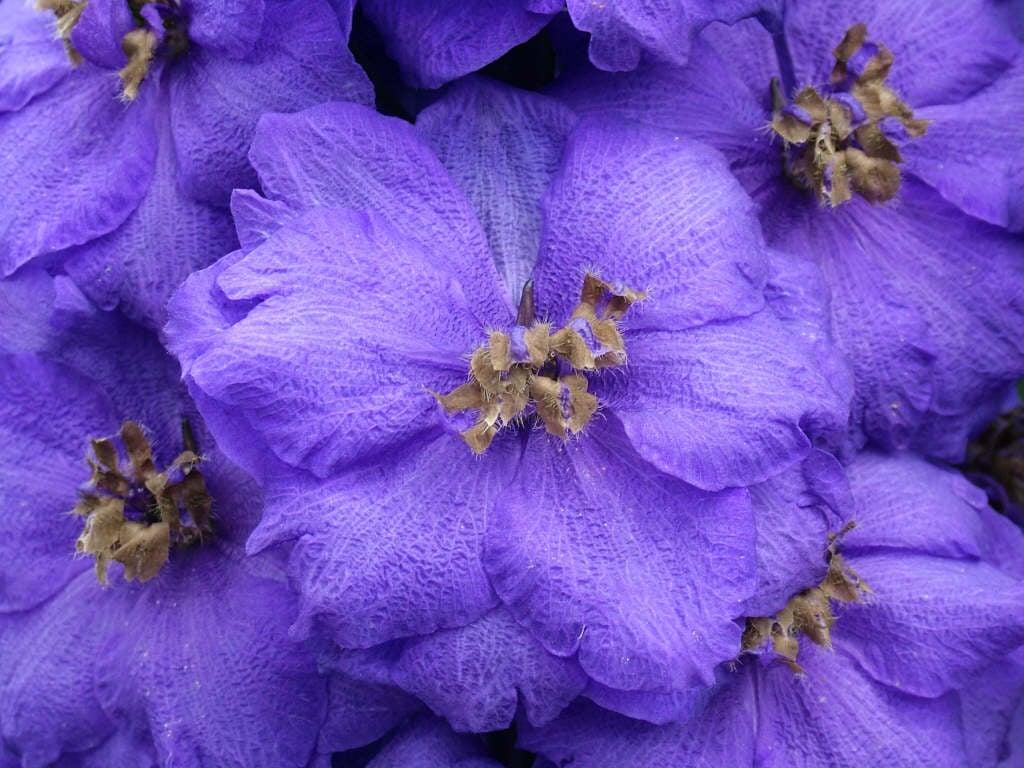Size
Ultimate height
1.5–2.5 metresTime to ultimate height
2–5 yearsUltimate spread
0.5–1 metresGrowing conditions
Moisture
Moist but well–drained, Well–drainedpH
Acid, Alkaline, NeutralColour & scent
| Stem | Flower | Foliage | Fruit | |
| Spring | Green | |||
|---|---|---|---|---|
| Summer | Purple Brown | Green | ||
| Autumn | Green | |||
| Winter |
Position
- Full sun
Aspect
East–facing or South–facing or West–facing
Exposure
Sheltered Hardiness
H5Botanical details
- Family
- Ranunculaceae
- Native to GB / Ireland
- No
- Foliage
- Deciduous
- Habit
- Columnar upright
- Potentially harmful
- Humans/Pets: Harmful if eaten. Wear gloves and other protective equipment when handling. For further information and contact numbers regarding pets, see the HTA guide to potentially harmful plants
- Genus
Delphinium can be annuals, biennials or perennials, with palmately lobed basal leaves and showy bowl-shaped flowers in spikes, racemes or panicles
- Name status
Accepted
How to grow
Cultivation
Grow in a fertile, well-drained soil in full sun; shelter from strong winds and stake well. Apply a balanced liquid every couple of weeks in the growing season. For the best flower spikes thin shoots when 7cm high to leave a minimum of 2-3 shoots on young plants and 5-7 shoots on established plants. See staking perennials and delphinium cultivation for further advice
Propagation
Propagate by taking pencil thick basal cuttings in early spring
Suggested planting locations and garden types
- City and courtyard gardens
- Cottage and informal garden
- Cut flowers
- Flower borders and beds
Pruning
Deadhead by cutting spent flower spikes back to small flowering side shoots. Cut down all growth to ground level after it has withered in autumn
Pests
May be susceptible to aphids, earwigs, delphinium leaf miner, delphinium moth caterpillars, slugs, snails and caterpillars
Diseases
May be susceptible to powdery mildews, delphinium black blotch, crown rot and viruses
Get involved
The Royal Horticultural Society is the UK’s leading gardening charity. We aim to enrich everyone’s life through plants, and make the UK a greener and more beautiful place.
